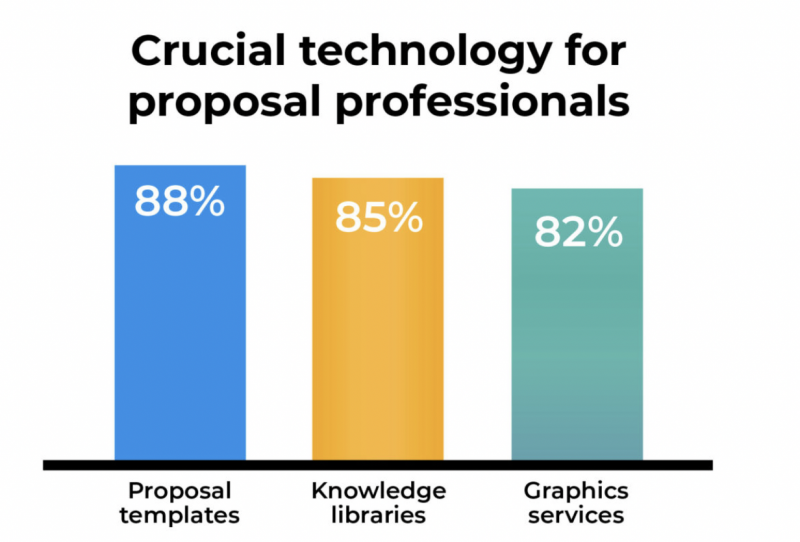An RFP response is the last, and perhaps the most important, step before the final acquisition of a client. A contract being your end game, you should treat an RFP response with due respect, and attention to detail. Your potential clients mostly get countless responses to their RFPs, so you have to do it exactly right. Here are some key principles that you should follow when writing your responses.

Do your research
I can’t stress this enough – you need comprehensive knowledge about your client, their projects, and the market they’re in. RFPs tend to be meticulous, and answering all of the prospect’s queries can prove to be challenging at times. Since this is your key to client acquisition, the research you conduct prior to writing one is well worth your time.
Not only do you learn about a particular industry for possible future responses, but you are also able to tailor your current one precisely to the needs of your customer. Perhaps you can provide some invaluable insights for them, as you’ll be looking at their project and market with a fresh eye. Marketing your solution is what matters the most here.
Answer the right RFPs
Another essential aspect is answering only the RFPs that you have a chance for acquiring. You don’t want to waste your time and resources on writing thorough RFPs for industries and brands that don’t go well with your line of work. If you’re a supplier that specialises mostly in AI, and machine learning, go for these RFPs. It’s not wrong to expand your knowledge into other fields, but the clients tend to go for providers whose main strength is the specific type of the project.
Likewise, make sure to assess if your team can manage to complete the project at an appropriate time. Sometimes deadlines are tight and require a lot of specialists working on the project at a time. If the task goes beyond your possible scope, don’t bother with it. Sometimes it will be more appropriate to go for answering an RFQ vs RFP.
The project’s needs are stated very clearly most of the time, so appraising whether you’re the man for the job is relatively straightforward. Still, even if you’re not the perfect fit for the assignment, it can sometimes be worth a try, but that depends a lot on the conditions. By gaining experience in responding to RFPs, you’ll surely be able to tell which ones are worth answering. Additionally, you can always ask some questions.
Ask additional questions
Sometimes RFPs are so detailed and thorough that it gets problematic to grasp the spectrum of the work. Suppose you have some doubts about whether you can finish the project or what the exact requirements are, go ahead and send an email to the prospect. There’s nothing wrong with asking for extra explanation. In fact, this can make the client think that you’re seriously invested in getting to know the project, further increasing your chances of scoring a customer.
Focus on the right things
Don’t beat around the bush with your answers. Be direct and thoroughly respond to the questions and concerns. What really helps here is the understanding of your client. There may be some basic instruction lacking in the RFP, which is where you can shine by asking the right questions. Propose an extra service, get to know the scope, and make any necessary suggestions.
Write in an easy to digest way
First of all, you should focus on writing your response in understandable language. Forget about using IT jargon in each sentence, as this makes your text hard to read. Explaining complicated workflows and processes in your company is also a good practice. On top of that, you can put some graphical content such as graphs or charts where appropriate. This further improves the reading ease. Don’t overuse passive English and split very long sentences, too.
Writing in a clear format or following a well-established RFP template makes it far easier for your addressees. Some clients will simply skim the whole text without looking into the details and may deem your response hard to read.

Source: rfp360.com
Promote yourself
Be sure to include an “About” section. Show your previous solutions that helped with similar projects. Additionally, you can give some examples of how your other clients succeeded because of your work. Testimonials can work wonders as well.
Review and proofreading
Now that you have your proposal ready review it. Then, review it again. And again. There’s always room for improvement and until you’re 100% sure that the response is of sufficient quality, then, and only then, you send it. Whether you let a grammatical or a stylistic mistake slip, you still come across as sloppy. If you make an error in such a “trivial” thing as a proposal, how about blunders in the project?
Wrap-up
As you can see, there’s quite a bit of work around your proposals. It goes way further than knowing the primary points of an RFP response. Replying to one takes skill, attention to detail and patience. After some time, you will have developed a workflow for your later proposals, which will undoubtedly make the process faster. If you manage to get your offer accepted, make sure that you streamline the contracting process and use a custom software development agreement.





